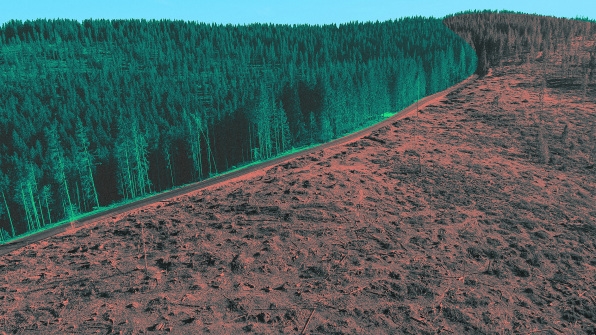The world lost enough trees to cover Pennsylvania last year—but some countries are reversing the trend
Last year, the world lost trees covering more than 29 million acres, an area roughly the size of the entire state of Pennsylvania. Around a third of the trees were in mature tropical rainforests, where the equivalent of a soccer field’s worth of primary forest was lost every six seconds. But there are also early signs that some efforts to stop business practices that drive deforestation might be working.
Using global satellite data and an algorithm, researchers at the University of Maryland looked at where the tree canopy was disappearing. In Bolivia, a record-breaking number of trees were lost to fires, most set by people to clear land for agriculture; some forests could take hundreds of years to recover. In Brazil, there was a sharp rise in clear-cutting the rainforest as the government relaxed protections (the Brazilian government proposed new laws this year to allow mining and oil and gas extraction on indigenous lands that may make the situation worse.) In Australia, massive fires linked to climate change led to the country’s worst year for tree loss on record.
But in some areas, the trend is moving in the other direction. In Indonesia, where the government has stepped up enforcement to prevent land clearing and forest fires, tree cover loss shrank 5% from the previous year. In Colombia, where the government is also increasing enforcement, tree loss also dropped. And in Ghana and Ivory Coast, loss of old-growth rain forest was a staggering 50% lower than in 2018.

It’s too early to say definitively why some West African countries made so much progress, but it’s possible that efforts from chocolate companies—who source cocoa from the area—are helping, in partnership with governments there. Hershey, for example, is working with cocoa farmers to help them grow more on the same amount of land and find other ways to avoid deforestation as production expands. More than 100 cocoa and chocolate companies are members of the Cocoa and Forests Initiative, a group that is mapping cocoa farms and working closely with governments to put the right policy in place to protect trees.
The challenge in the area is huge; over the last 50 years, Ivory Coast has lost 80% of its forests. But the new satellite data suggests that some changes are helping. “It’s kind of a tantalizing clue, an early signal, that this kind of connection between public efforts and private efforts might be able to be effective,” says Frances Seymour, a distinguished senior fellow at the nonprofit World Resources Institute, which has worked with Hershey on its efforts.
Companies of all types have struggled with the challenge of deforestation in their supply chains, and those that aimed to get to zero deforestation by 2020 aren’t on track to reach that goal. One challenge has been tracing the source of supplies. “Companies really had no idea where they were sourcing from and what the associated deforestation risk was, so it’s taken some time to put those systems into place,” Seymour says.
Newer tools, such as a platform called Global Forest Watch Pro, are helping brands better track their suppliers. Brands also realized that for programs to work, they had to be widespread. Otherwise, deforestation would just move to another location nearby, or a product would just go to another buyer who didn’t have the same “deforestation-free” requirement. Some larger efforts, such as the Cocoa and Forests Initiative, may finally be starting to help.
Stopping tree loss is critical for climate change. Tropical deforestation makes up an estimated 10% of the world’s total greenhouse gas emissions, or five times more than the global aviation industry, as trees burn or rot on the ground—and once trees are no longer growing, they can’t do the work of sequestering excess CO2 from the atmosphere. Many companies are now supporting tree-planting efforts. But it’s even more important to keep existing forests standing, by eliminating deforestation in supply chains and by supporting other efforts to protect forests, such as the work that Apple has done to fund mangrove forest protection in Colombia.
“If a company wants to invest in so-called nature-based solutions as part of their climate commitment, they definitely should consider investing in helping countries reduce emissions from deforestation, as well as restoring forests by planting trees,” Seymour says. “If you remove a tropical forest, you’re pumping a huge volume of carbon into the atmosphere in one go . . . and to get back to where you started, if you start planting trees again on that same space could take up to 100 years.”
(49)



